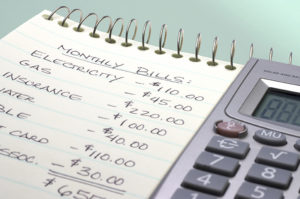Using a Debt Management Plan
Reviewed by:

Paying off high-interest rate debt, like credit cards or loans, can be challenging, especially when you have high balances on multiple debts. If you’re having trouble getting out of debt on your own, a debt management plan may be the solution you need. In the right circumstances, it can make it much easier and faster to become debt-free. Let’s look at how the plan works and how you can decide if it’s the right choice for you.
What is a debt management program?
A debt management program (DMP) helps you repay high-interest unsecured debts like credit cards and personal loans. This program aims to do this in an organized and systematic way.
A DMP is administered by a Credit Counsellor and works by combining multiple debts into a single affordable monthly payment and minimizing or eliminating interest. These payments are submitted to your Credit Counsellor who then distributes them to your creditors. As a result, you can get out of debt in 60 payments or less and save money as you become debt-free.
A debt management plan is not to be confused with other debt relief solutions such as debt settlement or debt consolidation. Throughout this page, we’ll cover the differences along with everything else you need to know about DMP before moving forward with one.
Featured Video:
Learn about the process.
Jeff Schwartz, Executive Director of Consolidated Credit, walks through how debt management plans work and what you can do to make sure you’re a good candidate.
What debts can I include?
A debt management plan consolidates most types of unsecured debt. Unsecured, unlike secured, debts don’t have any collateral, such as a home or property. Therefore, if you face financial difficulties, your creditors cannot seize your possessions to repay the loan. However, not repaying them can harm your credit score. A bad credit score can stop you from getting a job, renting an apartment, or buying a home.
The most common unsecured debts include:
- Credit cards
- Store credit cards and in-store credit lines
- Unsecured personal loans
- Personal lines of credit (LOCs)
- Debt collection accounts
- Short-term installment loans, such as payday loans
- Old utility or cell phone bills, not currently in use
You cannot include debts, such as:
- Secured debts (mortgage or car loan)
- Student loans
- Past due child support payments
- Debts owed to the Canada Revenue Agency (CRA)
How a debt management plan works
There are just 4 steps between you and a debt-free life. We have outlined them below to help you understand how debt management programs work.
Step 1: Contacting a counsellor
You contact a credit counselling organization to receive a free debt and budget evaluation from a trained credit counsellor.
After reviewing your debts, credit, and budget the counsellor will help you decide if a debt management plan is the best fit for your situation.
If so, the counsellor will work with you to find a monthly payment you can afford.
Step 2: Counsellor to the rescue
Then the counselling team will contact your creditors and work with them to reduce or eliminate the interest rates applied to your balances.
Once all your creditors agree, your plan will officially start.
Step 3: Debt-be-gone
You make one payment to the credit counselling service each month and they distribute it to your creditors every month as agreed.
As each credit card gets paid off, the account is closed.
Step 4: Enjoy!
With all your debts paid in full, you complete the program and can enjoy your debt-free life.
Debt management plan fees
Debt management plans do have fees that apply, but the cost is low compared to other solutions. There are two fees that you can expect when you enroll:
- A one-time setup fee
- A monthly administration fee
As a non-profit organization, Consolidated Credit does not charge clients to generate profits. These fees simply cover the administrative costs of overseeing your debt management plan.
Fees are based on the total debt you enroll in the plan and your budget. They are rolled into the monthly payments for your program, meaning you do not need to worry about an extra bill. You will not pay any monthly fees until your creditors agree to the terms of your debt management plan and you start to make payments.
The fees for a debt management plan are low compared to other solutions. With a debt settlement program, you pay a percentage of the original amount owed on each debt you settle. Consumer proposals have a filing fee of $1,500 plus 20 percent of all future payments under the proposal. Bankruptcy fees are even more than that.
During your free credit counselling session, before enrolling in a DMP, the credit counsellor will explain what fees to expect. You will know exactly what fees you’ll be paying and how much they are before starting the program.
Debt management plan pros and cons
The primary benefit of a debt management plan centres on the savings it provides. Minimizing interest makes it much easier to pay off your debt and much faster. Balances that would take years or even decades to pay off can be paid off in 60 payments or less and your payments can be reduced by up to 30 to 50 percent. You also protect your assets from being sold to repay your debts, which will happen if you file for bankruptcy.
There are some downsides to a debt management plan. It will be noted on your credit report that you are paying off your debt on an adjusted payment schedule. This notation remains for two years, much less time than other debt solutions, from the date you complete the program. You also cannot use the credit cards you enroll in the programs they are closed once they are paid off.
| Pros | Cons |
| Minimize or eliminate interest charges (APR reduced to 0-10 percent, on average) | Cannot use credit cards enrolled in the program and cannot apply for new credit while enrolled |
| Become debt-free in 36-60 payments, on average | Credit card accounts will be closed once they are paid off |
| Make one affordable monthly payment for all your debt | Noted in your credit report for two years from the date you complete the program |
| Provides you with financial education and tools to help you develop better money management skills | Some creditors do not take part in any DMP. Depending on which creditors you’re with this may limit the effectiveness of the program. |
| Stop annoying phone calls or emails from your creditors while you are on the program | Though minimal, there are fees associated with doing a DMP. |
Who do I turn to get a DMP?
If you aspire to be on an effective debt management program, contact a credit counselling agency.
It’s important to do in-depth research about the agency that you choose. Here are some crucial things to consider:
- How long has the agency been established?
- Does the agency have good reviews?
- How much does an agency charge for a DMP?
- Is the agency a non-profit?
- Are they listed on the Better Business Bureau? If so, what score do they have?
- Are they ranked by any other third-party sites, such as TrustPilot?
By finding out this information, you will be on your way to discovering the right organization for you.
Factors that could disqualify you from a debt management program
Several factors exist that can disqualify you from getting a debt management program.
Your income may not be enough: your finances may be too low to help you keep up with DMP payments.
The type of debt you have is ineligible: DMP are for unsecured debt like credit cards and payday loans. If your debt is mainly secured debt, such as a mortgage or car loan a DMP is not the debt solution for you.
Your creditors won’t negotiate: If your creditors won’t negotiate with the credit counselling agency they won’t be able to include that debt in your program. This doesn’t happen often as most creditors would rather receive something than risk getting nothing.
You may be facing legal action: if you are being sued by a creditor or are facing legal action by any financial institution, you may not be eligible for a DMP.
What resources can I access while enrolled in a DMP?
Here are some tools and resources you may access while on a DMP. These resources will help you understand how this program can help you.
Budgeting Assistance: A DMP can guide you in creating and maintaining a budget to help you manage your finances effectively so that you can secure your financial future.
Credit Counselling: You can receive counselling sessions with credit counsellors who can offer personalized advice on managing your debts and improving your financial situation. The counsellor can take an in-depth look at your spending habits and the goals that you want to achieve, and answer any questions related to finances you may have.
Educational Resources: Many DMPs offer educational resources and tools to help you improve your financial literacy and make informed decisions about your finances. These tools may come in the form of eBooks, educational videos, or PDF handouts.
Support Network: Enrolling in a debt management program provides access to a network of professionals who can offer you guidance and encourage you throughout the debt repayment process.
The resources available to you may vary depending on the credit counselling agency you choose. We suggest doing thorough research on the agency you want to reach out to.
Talk to a trained credit counsellor now for a free debt and budget assessment so you can see if a debt management program is the right debt relief solution for you!
A debt management plan and your credit
Your credit score is highly important to improving your financial future. In Canada, if you have an excellent credit score, of 760 and above, you will get better access to low-interest loans and you will not have any problems getting a job that requires a security clearance. However, if you have a poor credit score, one that is 580 or below, you will have a harder time buying a home, getting an apartment to rent, or applying for student loans.
Impact on your credit score
It’s important to recognize that a debt management plan will have some negative impact on your credit. The program is noted on your credit report for two years from the date you complete the program. Any accounts you include in the program will have an R7 status notation, which shows that it is a revolving account being paid back on an adjusted schedule.
Closing credit card accounts may also impact your credit score, especially if you close old accounts. Creditors consider “credit age” when calculating your credit score, which is the average age of all your accounts combined. If you close old accounts, it can decrease your credit age, which can in turn decrease your score.
Keep in mind, any decrease in your score will be temporary. You can also take steps to rebuild your credit once you get out of debt. What’s more, the credit report notations that result from a debt management plan are less severe than other debt relief solutions.
For example, a consumer proposal will also generate an R7 status for any account included in the proposal. However, the notation will remain for three years from the date your debt is discharged instead of two.
The credit damage caused by solutions such as debt settlement and bankruptcy is even more severe. These types of notations remain for six years and have a significant negative impact on your credit score. So, while a debt management plan will negatively impact your credit, it helps you avoid greater damage.
Rebuilding my credit score after a debt management program
If you want to rebuild your credit after you have completed a DMP, there are certain things that you can do. You should focus on:
Paying your bills on time
Paying bills on time helps build credit. It shows that you are reliable. It also builds your reputation and proves that you manage your money wisely. When we discuss paying bills on time, we are speaking about all forms of bills from your rent, hydro, utilities, phone bills, and credit card bills.
Timely bill payments boost your financial reputation. It is helpful when you apply for loans or credit cards in the future. Banks and credit card companies will see you as a low-risk borrower. This means you may be able to receive better interest rates and terms on future credit.
Credit utilization ratio
Keep your credit utilization ratio below 30%. Your credit utilization ratio is how much of your total credit limit is being actively used at once. Creditors see a credit utilization ratio below 30% as a positive sign you’re managing your debts responsibly. While this may not be doable while doing a DMP, following this guideline can go a long way once you’ve completed the program.
Get a secured credit card
Secured credit cards can improve your credit score. To open an account, you must deposit cash as security. The spending limit of the card matches your deposit. For example, if you deposit $1000, you can spend up to $1000. The major difference between secured and unsecured credit cards is that the unsecured card requires a deposit. By making timely payments to unsecured cards, your score will gradually improve.
Become an authorized user
By becoming an authorized user of a credit card owned by someone with a high credit score it can help improve your score. You wouldn’t need to actually use the card or even physically have the card. Just being authorized on their account can help.
Debt Management Program Versus Other Debt Solutions
Debt management program VS consumer proposal
A consumer proposal is a fantastic debt relief solution. With a consumer proposal, all your debt payments are pulled together into one payment, you repay much less than what you originally owed, and collections calls cease immediately.
That being said, a debt management program is often considered better than a consumer proposal. With a DMP you still benefit from narrowing payments down to one, lots of (albeit less than a consumer proposal) savings, but you also add on the advantage of less impact to your credit score.
Debt management program VS debt consolidation
Debt consolidation involves taking out a low-interest loan to pay off multiple debts from various creditors. This new loan combines your existing loans into one monthly repayment plan. There are many positives to getting a debt consolidation loan:
- It has an easy monthly payment process.
- Your new loan will have a lower interest rate, making it much more affordable than having multiple-interest loans.
- You may be able to repay your debts faster with a debt consolidation loan.
What makes a DMP much more attractive than a debt consolidation loan is that it may have fewer fees than the loan. Plus, if you have a poor credit score which is 580 or below, you may have to pay higher interest on a debt consolidation loan making it ineffective. Finally, getting a new loan may not address the lifestyle and budgeting issues that got you into debt in the first place. With a DMP, your credit counsellor can help you improve your budget and your financial goals. This will help you create the change that you require.
Debt management program VS bankruptcy
A DMP is often considered a better option than bankruptcy because it helps you repay your debts over time with the guidance of a credit counsellor. Though bankruptcy involves a legal process it can help you get out of debt faster than a DMP.
Although bankruptcy is beneficial if you are truly struggling to repay your debts, it has its drawbacks. If you choose to file for bankruptcy, it may take you up to 6 or 7 years to get the information removed from your public records, and it will also highly damage your credit score. However, a DMP will take 5 years or less to complete and it will not severely harm your credit score.
Debt management program VS debt settlement program
A debt settlement involves negotiating with creditors to pay off a portion of what you owe. You can negotiate with your creditors by yourself, or you can join a debt settlement program. If you choose to join a debt settlement program through, you may get a better deal because many creditors have built trust with various agencies in Canada.
Although joining a debt settlement program may seem like a great idea, in the long run, you could end up hurting your credit score and possibly your overall financial health. The more money you pay back on a debt relief solution, the better your credit score and finances.
A DMP is better than a debt settlement because it helps you repay your debts in full over time. This helps you build your financial reputation and your credit score, making it easier to apply for loans with lower interest rates.
Deciding if a debt management plan is the right solution for you
Like all debt solutions, a debt management plan is not for everyone. If you have the means to pay off your debt on your own, it’s recommended that you do so. That will help you avoid any negative notations on your credit report.
A debt management plan is meant to help Canadians who are having trouble getting out of debt on their own, but who are dedicated to paying off what they owe. Your credit counsellor will work with you to find a monthly payment you can afford.
If you’re still unsure, call to speak with a trained credit counsellor. The counsellor can review your budget and help you understand all the options you have for relief. Then they can help you identify the best solution for your needs. The counsellor will only recommend a debt management plan if it’s the right fit for your unique financial situation.
Key takeaways
- A debt management program (DMP) combines your unsecured debts into one monthly payment. It can also lower the interest rates that you have to pay on your debt.
- Though your credit score may be low at the beginning of a DMP, when you finish the program, your overall financial wellness will improve and your credit score will increase.
- When you are on a DMP, it is important to be consistent and disciplined with your monthly payments. If you frequently miss payments, your creditors can change their arrangement with you, and you will no longer be on a DMP.
- A debt management plan also can’t help you if you don’t have the means to make monthly payments. If you are unemployed or cannot afford to make any payments on your debt, then this solution is unlikely to work.
Frequently asked questions
This depends on the accounts that you want to include in your debt management plan. If the accounts are held jointly with your spouse, then you would need to enroll together. If you hold the accounts you wish to include in the plan individually, then you can enroll on your own.
No, although it is highly recommended. In rare instances, you may be able to leave a credit card out for emergencies, or if it is required for you to earn an income. However, your credit counsellor will help you balance your budget with built-in savings, which should help you cover unexpected expenses without a need for a credit card.
Ideally, you want to include all your cards so you can enjoy a complete break from credit reliance. This will help ensure you are completely debt-free once you complete the program.
No. These two debt relief solutions are often confused but are vastly different. A debt management plan pays off the principal (the actual debt you owe) in full. Debt settlement only pays a fraction of the principal off. That’s why debt settlement results in greater credit damage because you don’t repay everything you owe.
With a debt settlement plan, your creditors do not agree to the new payment arrangement from the beginning. They also will not be paid every month. This can result in charge-offs, collections, and potential lawsuits.
With a debt management plan, your creditors agree upfront to accept payments through a credit counselling organization. They receive those payments every month as agreed. You and Consolidated Credit maintain contact with your credit card companies while you are enrolled.
No. A debt management plan should not be confused with a debt consolidation loan. While a debt management plan consolidates your debts into a single monthly payment, you still owe your original creditors. When you enroll, you do not take out a loan through Consolidated Credit and use the funds to pay off your creditors.
Instead, Consolidated Credit’s team serves as your advocate and works with your creditors on your behalf. Each month, when you make payments to Consolidated Credit, we distribute those payments to your creditors as agreed. You can see the balances on your credit card accounts decrease gradually as you work through the program.
Enrollment in a debt management plan is voluntary. Unlike a consumer proposal, a debt management plan does not create a legally binding agreement between you and your creditors.
This means you can drop out of the plan at any time without facing any penalties. All the payments made will still be credited to your credit card accounts, so you will still benefit from the progress you made up to that point.
It’s important to note that your creditors will likely restore the original interest rate and any penalties or fees applied to your account before you enrolled.
It’s highly recommended that before stopping payment you speak with your credit counsellor. There are things they can do to help so that you can stay on the program.
Licensed Insolvency Trustees (LIT) do not typically adminster DMP. That being said, it’s not improbable that an LIT would also offer DMPs within their portfolio of services.
Most DMP are offered by non-profit credit counselling services.




